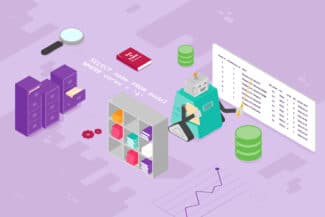Even if you have already had a blog on the Internet on text files for 30 years, as some database creators do, in fact, this text file is a database, just a very simple one.
Everyone is trying to reinvent the database. One of the speakers at the conference said: “20 years ago I wrote my database, but I did not know that it was it!” This trend is very developed in the world. Everybody tries to do that.
For working with data, a database is a very handy thing. Many databases are very old technologies. They have been developed for the last half century, in the 70s there were already databases that worked on the same principles as now.
These databases are very well and thoughtfully written, so now we can choose a programming language and use a common convenient data processing interface. In this way, you can process data in a standardized way without fear that it will be processed in some other way.
At the same time, it is useful to remember that programming languages are changing: yesterday there was Python 2, today Python 3, tomorrow everyone ran to write in Go, the day after tomorrow in something else. You may have a piece of code that emulates the data manipulation work that the database is supposed to do, and you won’t know what to do next.
Most databases have a very conservative interface. If you take PostgreSQL or Oracle, then with some tambourine you can work even with very old versions from new programming languages - good and great.
But the task is actually not the easiest one. If we start digging into the depths of how we do not “beat” the data, how quickly, efficiently and, most importantly, so that later we can trust the result, process it, then it turns out that this is a difficult matter.




